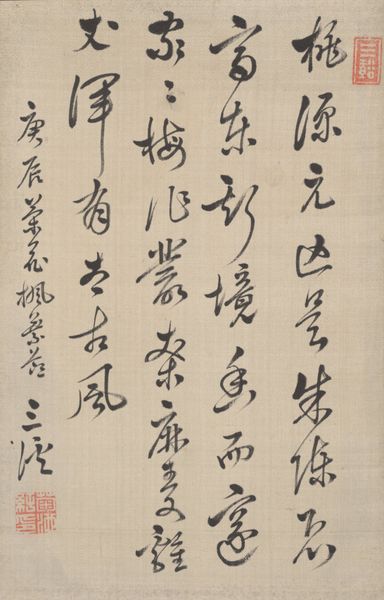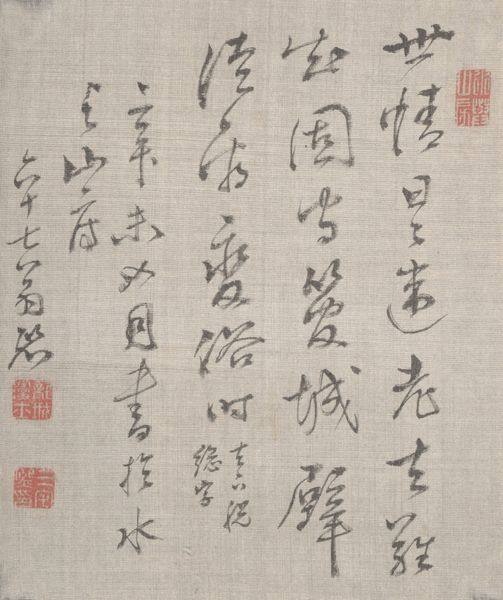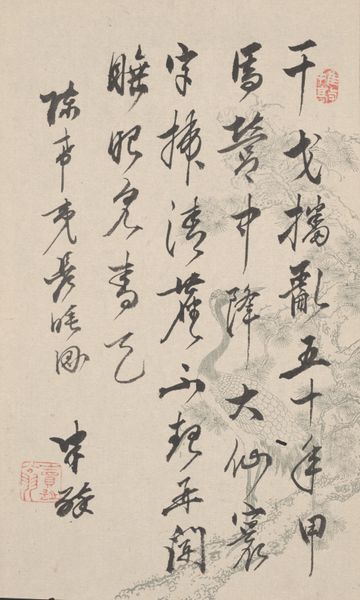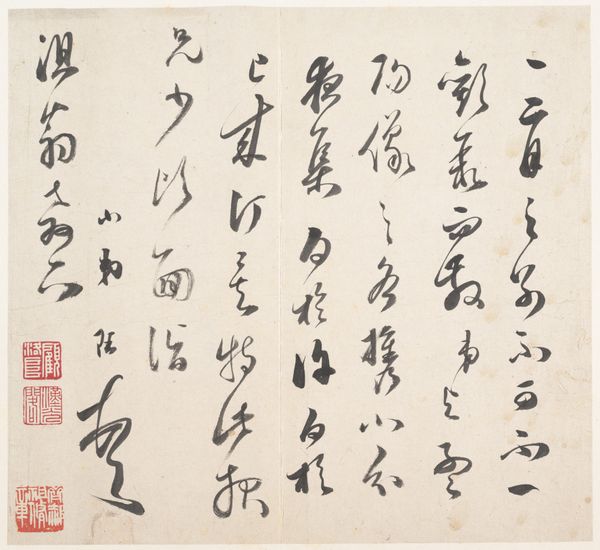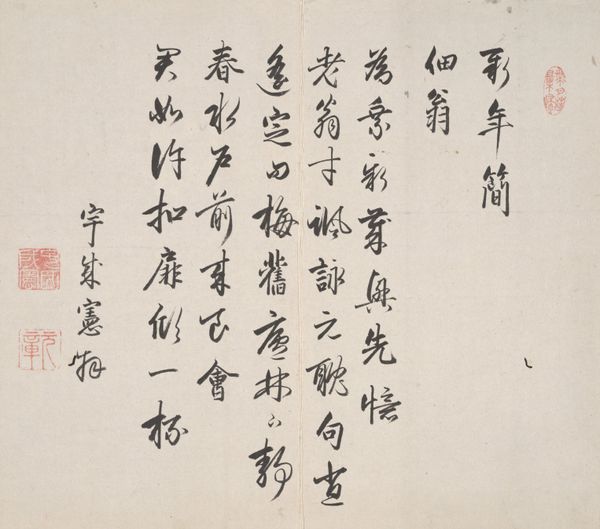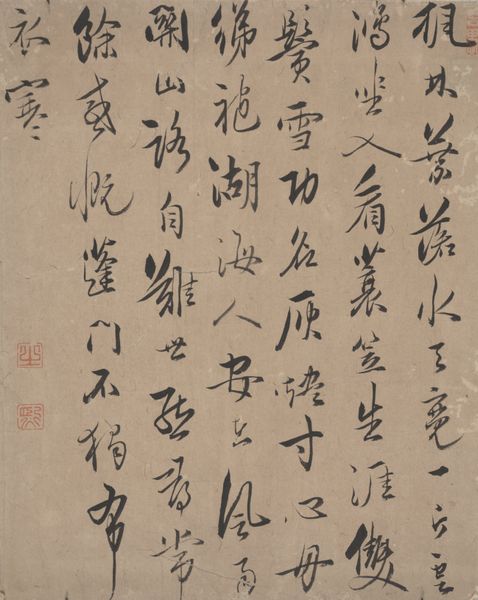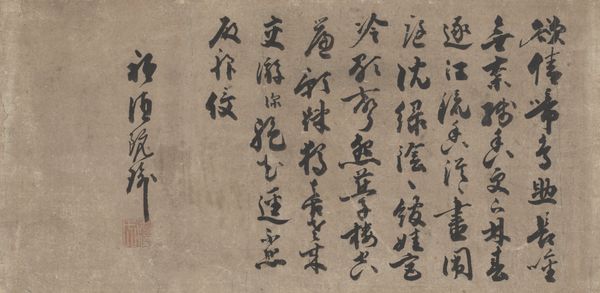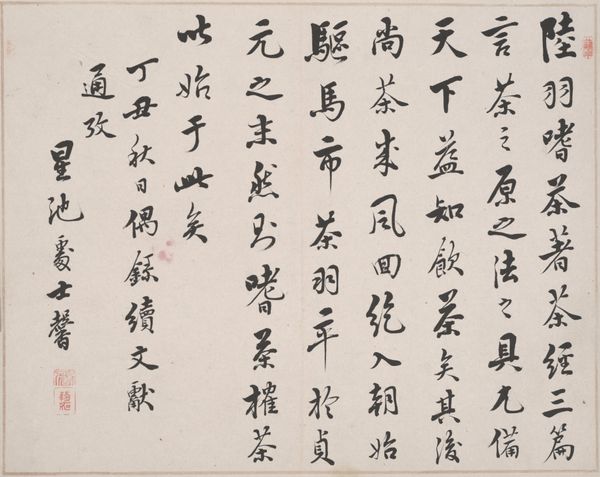
drawing, paper, ink-on-paper, ink
#
drawing
#
asian-art
#
paper
#
ink-on-paper
#
ink
#
geometric
#
line
#
calligraphy
Dimensions: 5 3/4 × 5 7/8 in. (14.61 × 14.92 cm)
Copyright: Public Domain
Ishikawa Godō created this Autumn Poem using ink on paper sometime before his death in 1852. In Japan, calligraphy has long been considered a high art form, not just a means of communication. Consider this work in the context of the Edo period, which was defined by rigid social hierarchies under the Tokugawa shogunate. While ostensibly a poem about the autumn season, calligraphy like this also conveyed social status. Mastery of brushstrokes and familiarity with classical literature indicated a high level of education and refinement. The red seals, or chops, are also significant. They act as signatures, marking the work as authentic and adding another layer of meaning. They assert the artist's claim to authorship but also connect him to a lineage of calligraphic tradition. To truly understand this work, we might turn to historical texts on calligraphy, social histories of the Edo period, and biographies of Ishikawa Godō. Only then can we grasp the full meaning of this seemingly simple poem.
Comments
No comments
Be the first to comment and join the conversation on the ultimate creative platform.



